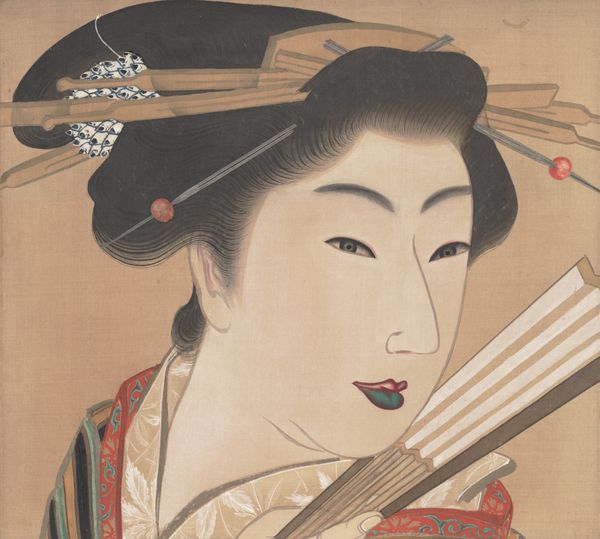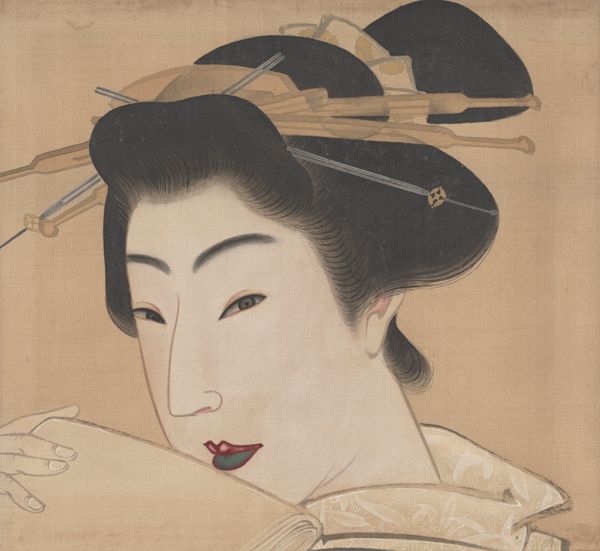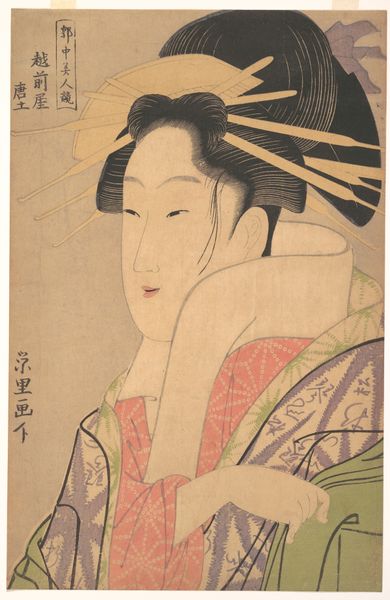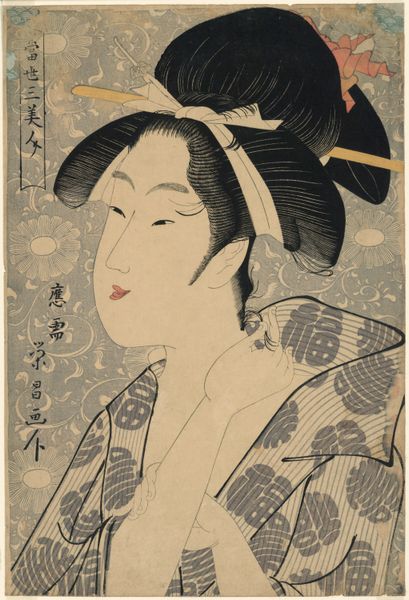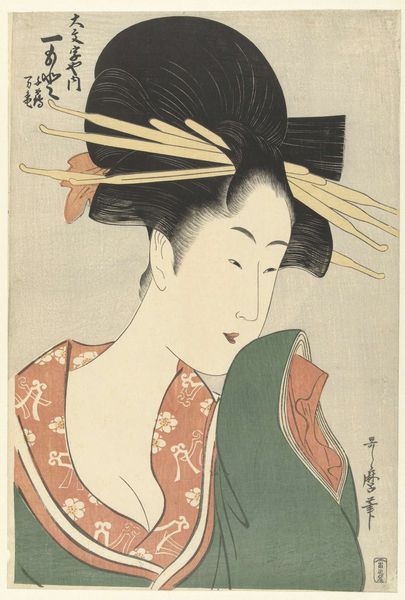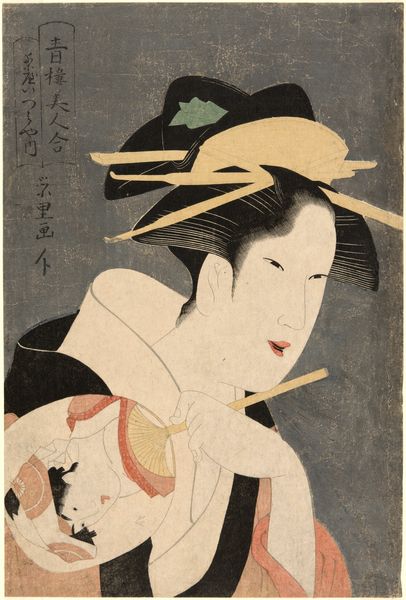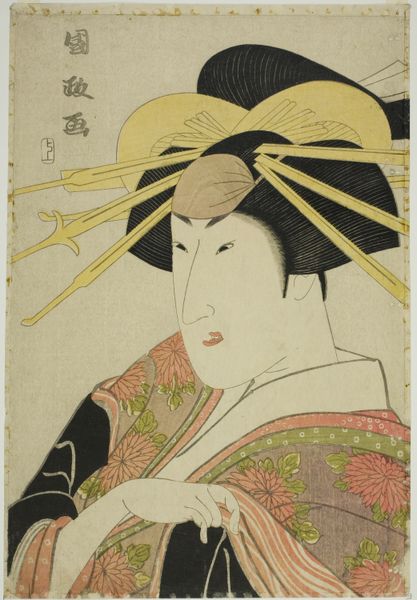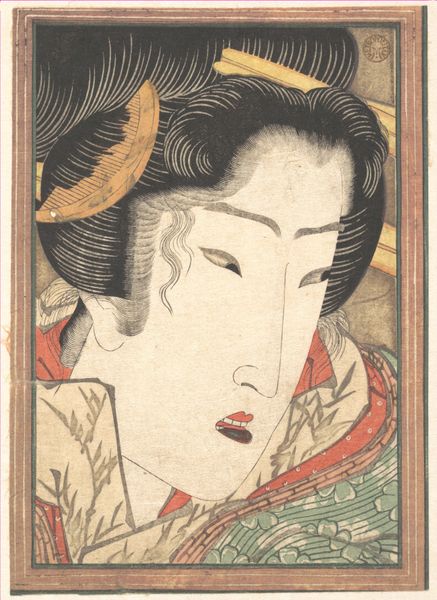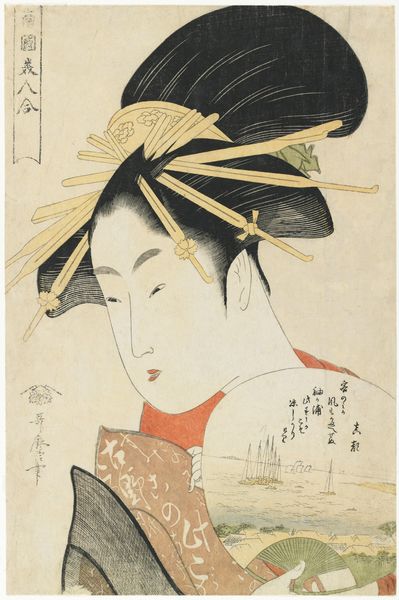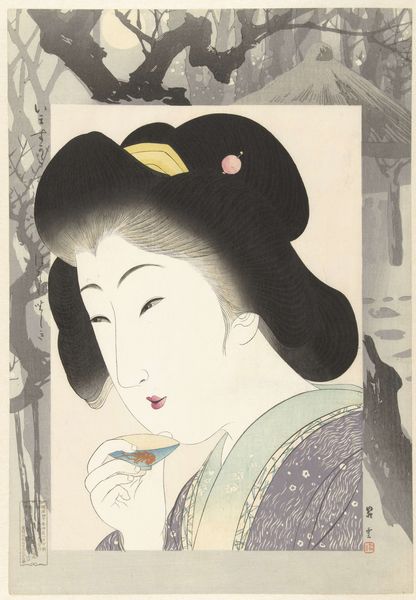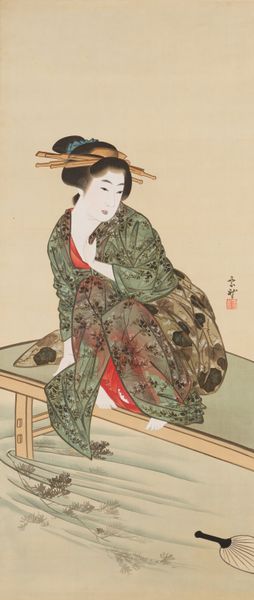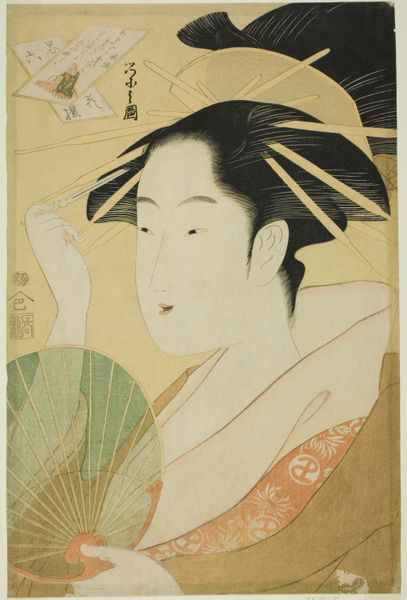![Geisha [right of a triptych of Three Beauties] by Mihata Jôryû](/_next/image?url=https%3A%2F%2Fd2w8kbdekdi1gv.cloudfront.net%2FeyJidWNrZXQiOiAiYXJ0ZXJhLWltYWdlcy1idWNrZXQiLCAia2V5IjogImFydHdvcmtzLzQwM2JhNmQwLWU1OTItNGM2NS1hNTcyLTQ5MDAzNTZkYzM0OC80MDNiYTZkMC1lNTkyLTRjNjUtYTU3Mi00OTAwMzU2ZGMzNDhfZnVsbC5qcGciLCAiZWRpdHMiOiB7InJlc2l6ZSI6IHsid2lkdGgiOiAxOTIwLCAiaGVpZ2h0IjogMTkyMCwgImZpdCI6ICJpbnNpZGUifX19&w=3840&q=75)
ink
#
portrait
#
asian-art
#
caricature
#
ukiyo-e
#
ink
Dimensions: 10 3/8 × 11 7/16 in. (26.35 × 29.05 cm) (image)55 3/8 × 25 5/16 in. (140.65 × 64.29 cm) (mount, without roller)
Copyright: Public Domain
Mihata Jôryû created this woodblock print of a geisha in the 1830s or 40s. As part of a triptych entitled “Three Beauties,” this work is a window into the floating world of Edo-period Japan. Geishas were more than just entertainers; they were artists, trained in traditional Japanese arts, conversation, and etiquette. In a society rigidly defined by social status, geishas occupied a unique position, often transcending class boundaries through their skills and wit. Here, the geisha’s elaborate hairstyle, complete with ornate hairpins, is a signifier of status and accomplishment. Her flawless makeup enhances her allure while also acting as a mask, concealing the individual behind an idealized image. The fan she holds is decorated with butterflies, symbols of transformation, perhaps hinting at the geisha's own ability to transform herself into the epitome of beauty and grace. As we consider this image, let's reflect on the complex role of women in historical and contemporary society. How does this artwork shape our perceptions of identity, beauty, and the intricate dance between tradition and individuality?
Comments
No comments
Be the first to comment and join the conversation on the ultimate creative platform.
